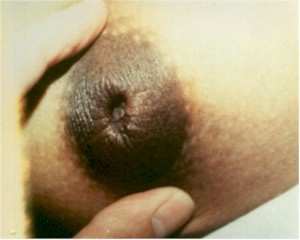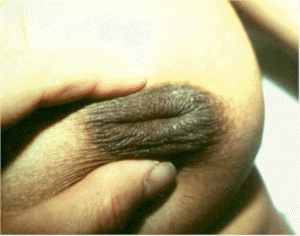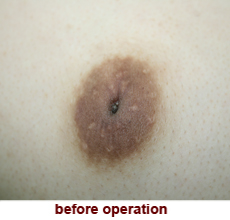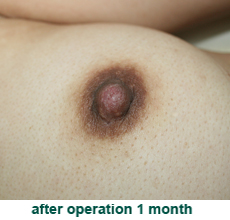
By Micky Fulido
The nipple is of tremendous importance as a visual and sexual focus of the female body. As a third focus, the nipple has a nutritive function as in breastfeeding basis. That is why body image, sexuality and breastfeeding are adversely affected by its abnormal conditions.
 In order to achieve a successful breast-feeding, an infant needs to suck the whole bulk of nipple and almost hundred to eighty percentage of the areola. That is why abnormal nipple conditions such as inverted nipple may result in problems with starting, establishing and maintaining breast-feeding. Nipple inversion may cause cosmetic, functional, and psychological problems. Some of the physical signs may be irritation, inflammation, and interference with breast-feeding.
In order to achieve a successful breast-feeding, an infant needs to suck the whole bulk of nipple and almost hundred to eighty percentage of the areola. That is why abnormal nipple conditions such as inverted nipple may result in problems with starting, establishing and maintaining breast-feeding. Nipple inversion may cause cosmetic, functional, and psychological problems. Some of the physical signs may be irritation, inflammation, and interference with breast-feeding.The terms retraction and inversion often are used interchangeably, but such usage is inexact. Retraction is properly applied when only a slit shape area is pulled inward, whereas inversion applies to cases in which the entire nipple is pulled inward occasionally, far enough to lie below the surface of the breast (Nicholson et al, 2009). Inverted nipple may be seen in different forms and structures related to the severity of fibrosis, lack of soft tissue bulk, and lactiferous ductus. In some cases, the nipple may be temporarily protruded if stimulated, but in others, the inversion remains regardless of stimulus.
Inverted nipple is not an uncommon deformity. It was first described by Cooper in 1849 and surgical repair of the inverted nipple was first described by Kehrer in 1888.
The nipple is the symbol of the female body with the breast. It is why nipple inversion adversely affects a woman’s self-esteem and why they often seek correction of it.
Anatomy of the nipple and areola: Nipple-areolar complex.
 |
| BEFORE SURGERY |
 |
| AFTER SURGERY |



No comments :
Post a Comment